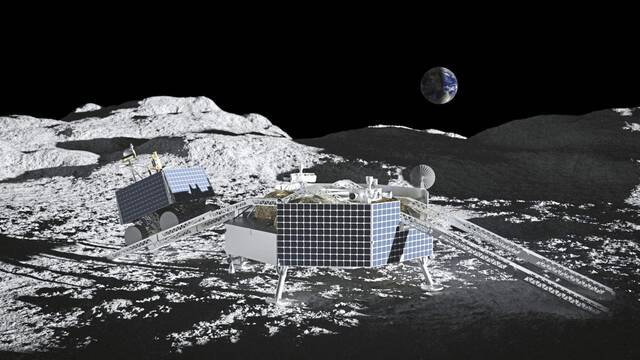Astrobotic's Griffin test model moves lunar lander closer to 2023 mission
Pittsburgh-based Astrobotic has moved one step closer to a 2023 moon landing for its Griffin Lunar Lander, the largest lunar-lander since the Apollo Lunar Module.
Astrobotic announced that it has completed a Griffin Lunar Test model and is now headed for environmental testing.
Unlike the Apollo landers of the late 1960s and early ‘70s, its target mission is to deliver cargo, not people, to the moon.
In this case, it would carry NASA’s water-hunting Volatiles Investigating Polar Exploration Rover, or VIPER. Tests will confirm VIPER can successfully deploy to the lunar surface from Griffin’s large ramps.
It will also provide an opportunity for rover operators to practice operating in tandem with Griffin.
Finding large quantities of water on the moon is important for potential extended missions involving humans since transporting water from Earth would be cost prohibitive.
The fully loaded Griffin Structural Test Model (STM) is more than 13,000 pounds, comparable to the weight of an elephant. The STM is an important part of the process to ensure the Griffin Lander can survive the harsh environment of the launch aboard a SpaceX Falcon Heavy rocket.
The STM will undergo static, then acoustic, and vibration testing at specialized facilities.
“The STM’s deck was hollowed out from a 12 foot-by-12 foot aluminum sheet and has more than 2,500 bolts securing the primary structure alone,” said Brandon Schoonmaker, mechanical systems lead at Astrobotic. “We constructed the STM as a pathfinder activity, allowing us to try out the tools, equipment, and processes before spaceflight.”
After launching into space, Griffin will deliver VIPER to the moon in late 2023 as part of NASA’s Commercial Lunar Payload Services.
“With the completion of this major milestone, Griffin is one step closer to serving as America’s workhorse lander for lunar cargo,” said Astrobotic CEO John Thornton.
Remove the ads from your TribLIVE reading experience but still support the journalists who create the content with TribLIVE Ad-Free.

